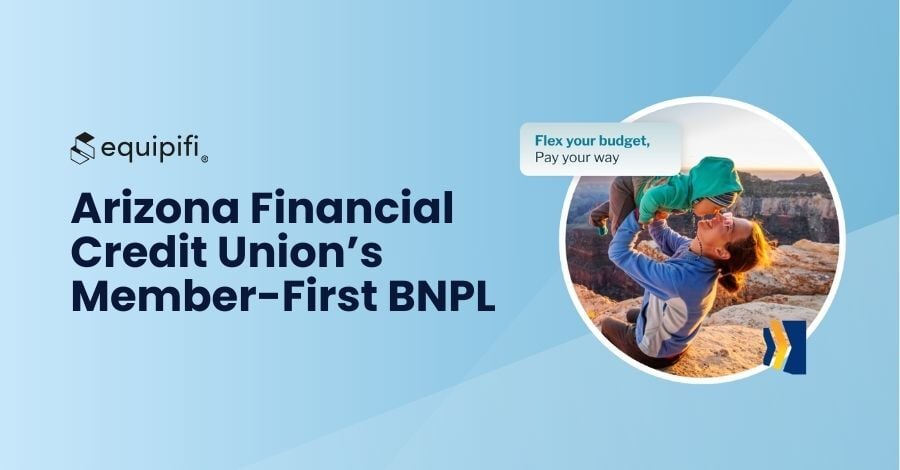With rising consumer interest, Buy Now, Pay Later (BNPL) has become a must-have service, and many financial institutions have unlocked their own versions of this payment format. Unlike the BNPL options available from third-party providers, these Bank BNPL solutions are made available on an existing payment method such as a credit card or debit card. (This is in contrast to fintechs who offer BNPL and issue debit cards and credit cards to their customers.)
For financial institutions who are looking to invest in BNPL, it can be confusing navigating the strategic benefits of offering it on either credit cards or debit cards.
Here’s a quick overview of each.
- Debit Card BNPL enables split payment capabilities on eligible debit card purchases. BNPL offers are often extended to consumers who satisfy specific underwriting criteria (ex: cash flow, account standing, financial health, etc).
Examples: Chase Debit Pay-in-4 | Suffolk CU BNPL | ECCU BNPL | GEN Pay | SpendFlex | Frontier Pay
- Credit Card BNPL enables split payments on eligible credit card purchases. BNPL offers are extended having taken the consumer’s existing credit line, income, and payment history into consideration. Some also offer customers the ability to plan purchases.
Examples: US Bank Extend Pay | PSCU Post-Purchase Installment Payments | American Express Plan It & Pay Over Time
In both instances, payments are made in installments, usually from a checking account, based on the terms that the cardholder selected at the time of accepting the loan. Cardholders enjoy the benefits of being able to stretch their budget without the stress of up-front payments. They have the certainty of receiving financial flexibility without needing to apply. Financial institutions are able to meet cardholder preferences while increasing engagement and even earning interest income. It’s a win for both the consumer and the issuing financial institution.
it’s important to note that debit card users represent the largest portion of your member base, and are the most likely to use competing fintech solutions whose primary objective is to displace the CU relationship.
So which one should you do? These questions could be helpful to answer first:
1. What payment options do your members prefer?
What payment options do your members prefer and how is that changing over time? If you are a credit union, NCUA call report data shows that out of all credit unions in the US, credit cards see approximately 17 percent penetration. If that is what the usage data in your institution looks like, then debit card BNPL would be a necessary first step.
2. How would you like to drive engagement?
When you are looking to drive engagement, credit card BNPL and debit card BNPL could both be successful investments. BNPL is a tool that connects purchasing and budgeting with banking, allowing your cardholders to have more touchpoints with you. Review who and how many within your cardholder population will benefit from each when deciding how to invest in your own BNPL solution.
3. Are you looking to grow deposit relationships?
One key difference between debit card BNPL and credit card BNPL is its ability to grow deposit relationships. Many BNPL providers including SoFi have unlocked their BNPL solution only for members that have direct deposit set up.
Since BNPL providers set the eligibility parameters for such a highly demanded product, debit card BNPL can be an attractive benefit to strengthening deposit relationships.
4. Do you want BNPL to grow your interest income?
If interest income is the top objective, you'll likely prefer debit card BNPL over credit card BNPL. You can set your own debit card BNPL interest rates, equating to net new income. Third-party BNPL loans have APRs as high as 34% after the introductory promo. For credit card BNPL, which is offered on purchases that are already subject to an APR, monetization tends to come in the form of a fixed monthly fee.
5. How is BNPL impacting your card utilization?
More and more consumers are choosing third-party BNPL over credit cards due to its reasonable repayment terms and helpfulness for budgeting. If third-party BNPL use is a concern, you may want to implement a BNPL solution of your own. However, CFPB data shows that 89 percent of repayments of third-party BNPL loans from fintechs such as Affirm, Klarna, and Afterpay happen on the debit card. Launching debit BNPL can help keep this cash within your institution.
BNPL is a powerful tool to drive engagement, loyalty, and acquisition. If it is possible to launch BNPL on all your payment products, it’s worth doing. However, it’s important to note that debit card users represent the largest portion of your member base, and are the most likely to use competing fintech solutions whose primary objective is to displace the cardholder relationship.






SHARE